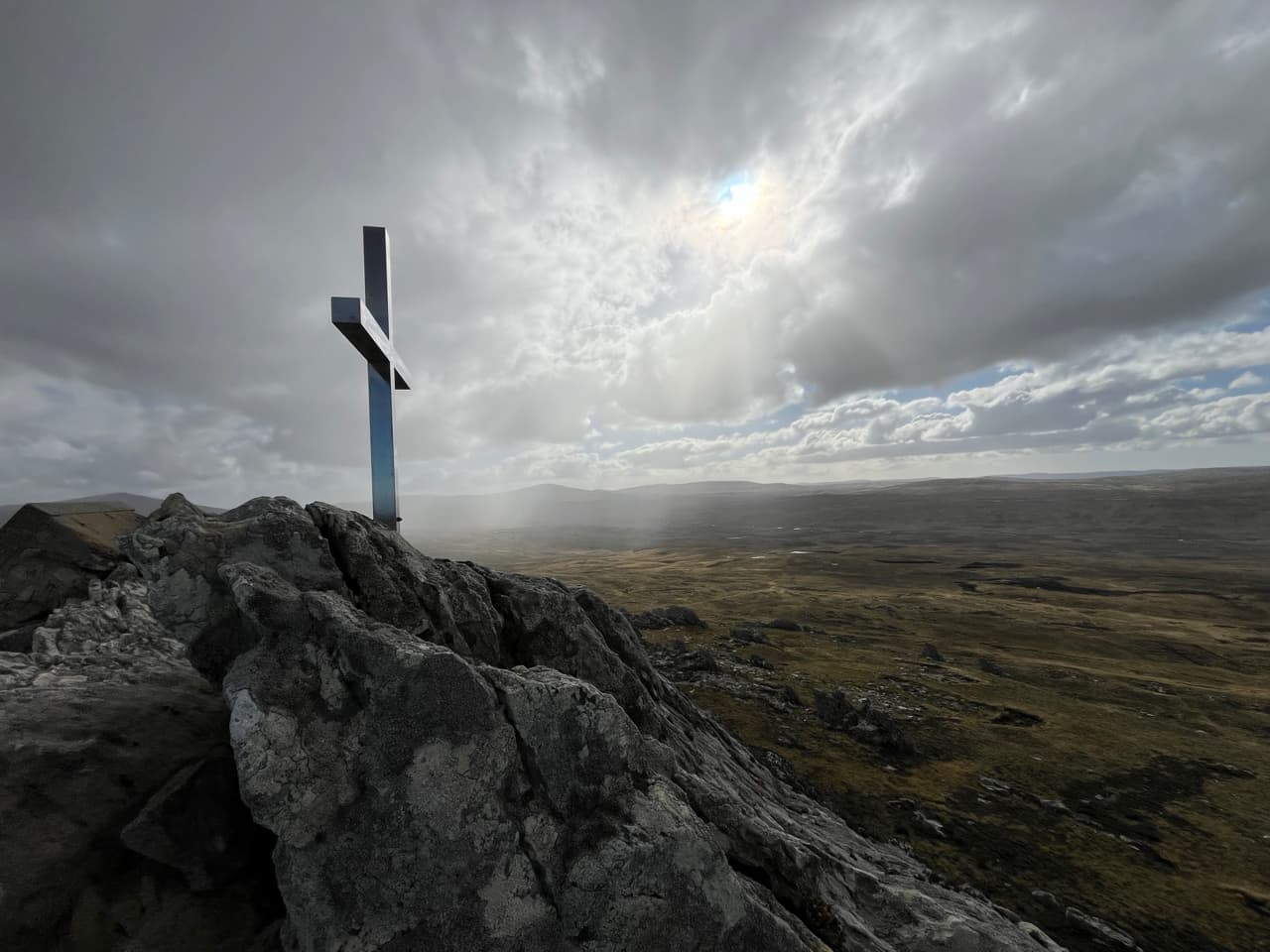Hiking and History
We had a wonderful place to stay with David in the former boathouse right on the harbour with a view of the water, even though we first had to get used to the amount of space and the distribution across two huge flats after our long time on board the Selma. Cooking together in the evening or going out and being out and about during the day was therefore the order of the day. Not least because of the large number of cruise ship tourists who still flocked to the small town about every other day at the end of the season.
On those days, we turned our backs on Stanley and went hiking when we weren’t on the coast or off-road to see the penguins.
To the west of Stanley stretches a barren, wide, hilly, golden-yellow landscape. Often interspersed with so-called “stone runs” or “stone rivers” – extensive, mostly linear fields of huge grey quartzite blocks stacked next to and on top of each other, which line the slopes and seem to flow down like waterfalls made of stone – a geological phenomenon and remnant of the last ice age, which Charles Darwin already described enthusiastically.
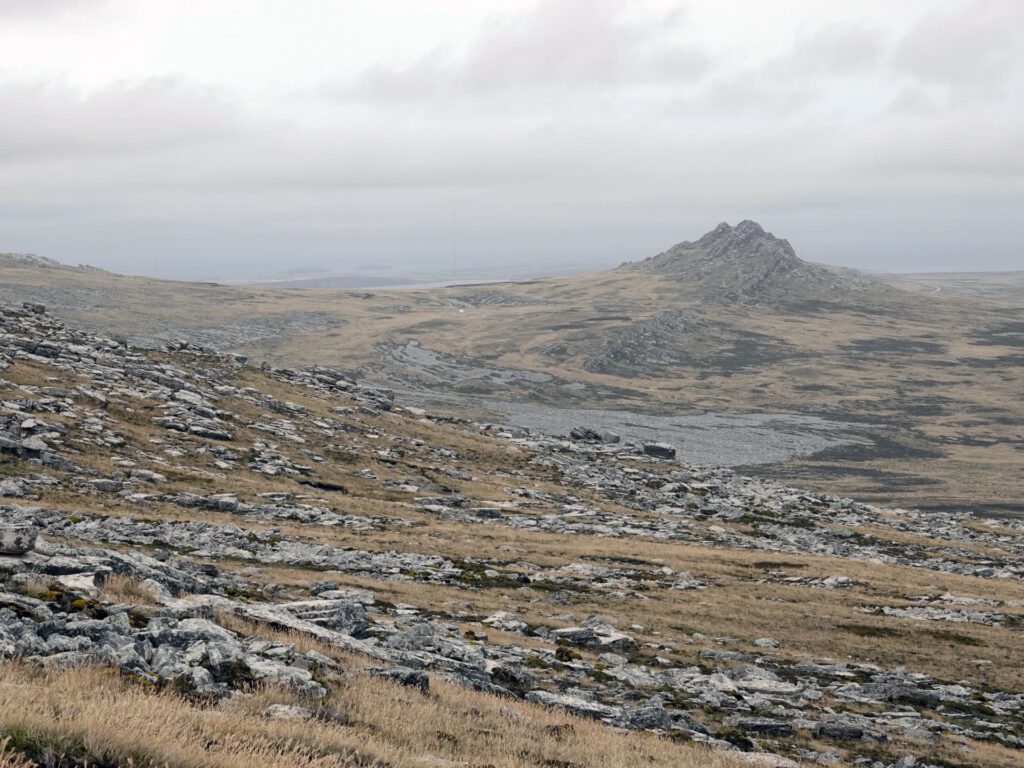
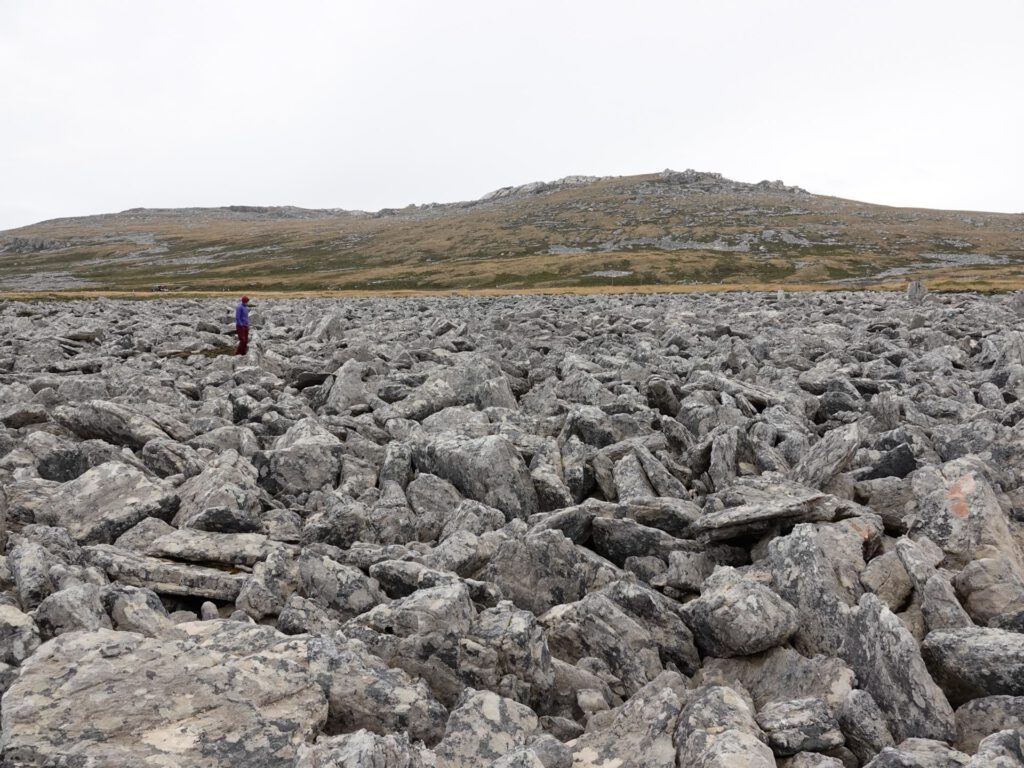
Despite their relatively low altitude, the rocky ridges and peaks offer beautiful views, magnificent panoramas and plenty of history – traces, relics and memorials from the time of the Falklands War. Almost all of these surrounding mountains were the scene of the military conflict between Argentina and Great Britain – far too often with fatal results, as the countless crosses and memorial plaques on the peaks show.
We hiked Mount Harriet, Mount Tumbledown, the Two Sisters and Mount Longdon – sometimes in the rain, often in the sun, always in strong winds. And on some evenings when we came back, Alan, who had been fly fishing with Adrian on the Murrell River in the meantime, was waiting for us with fresh salmon trout or mullet.
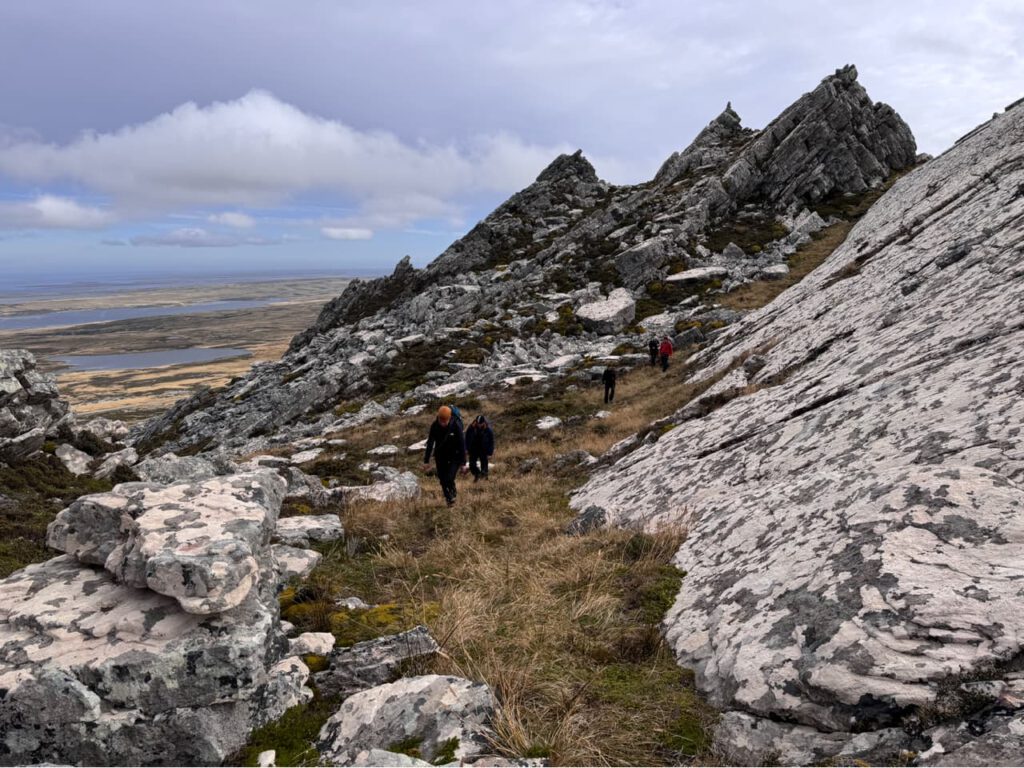
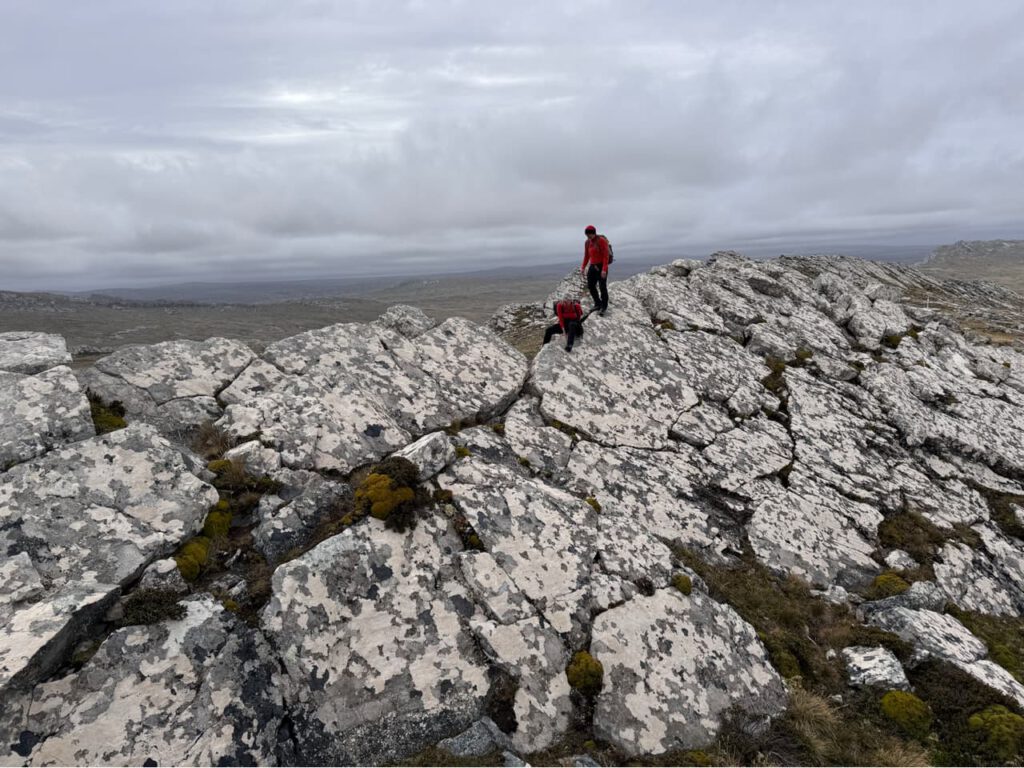
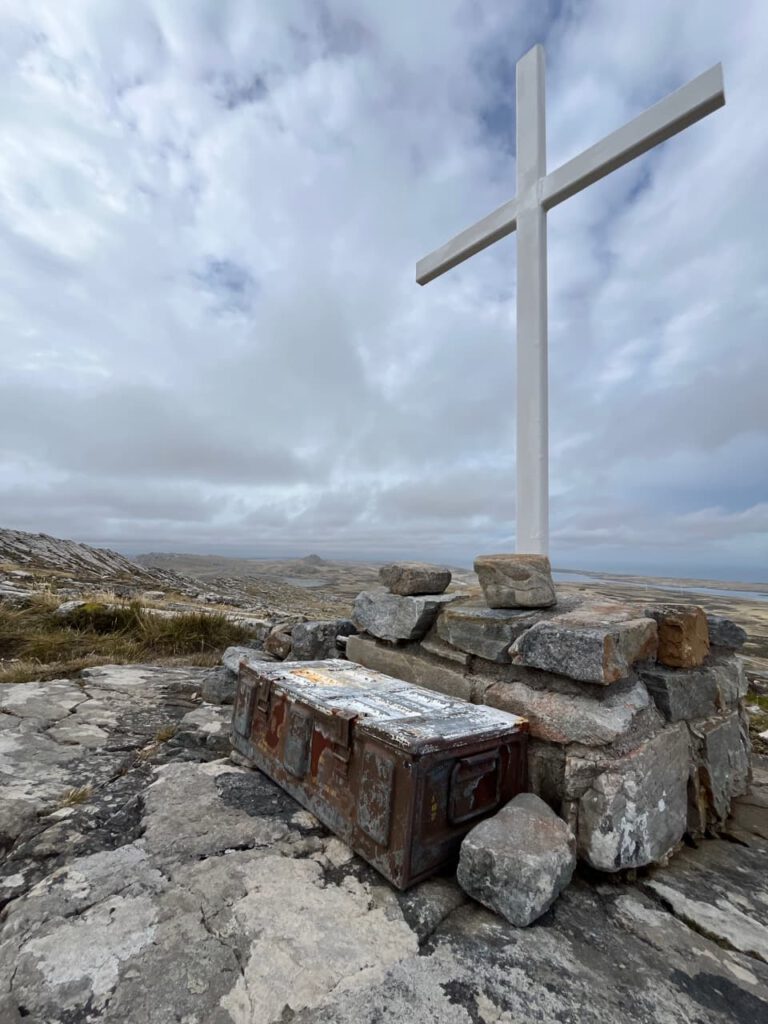
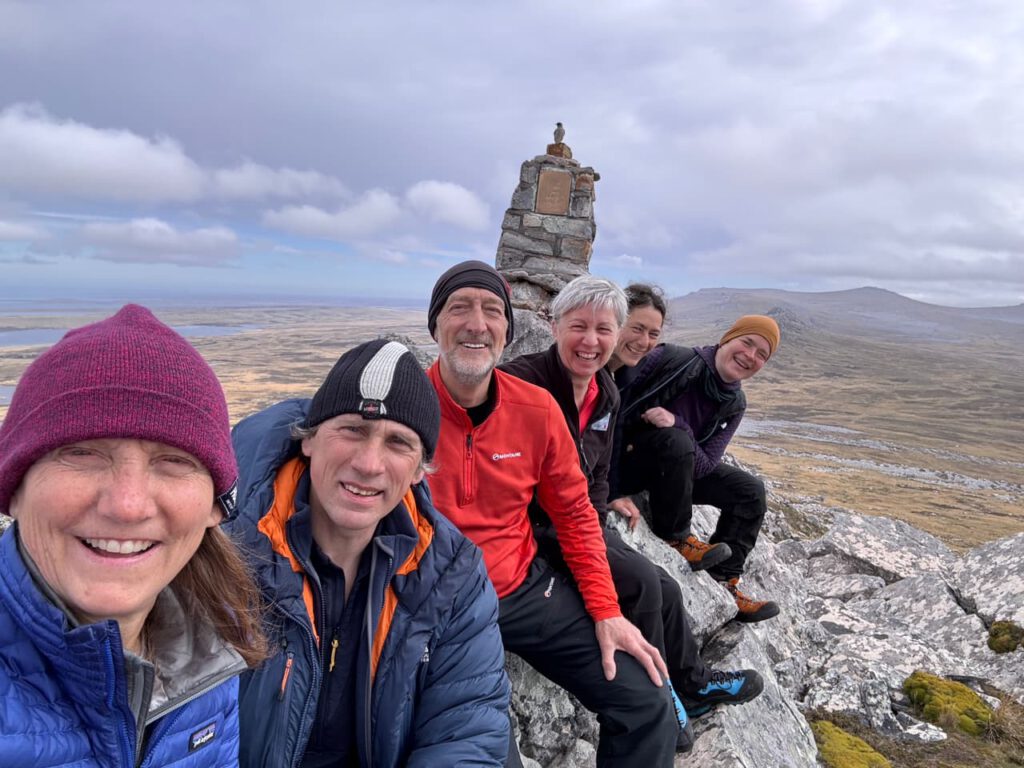
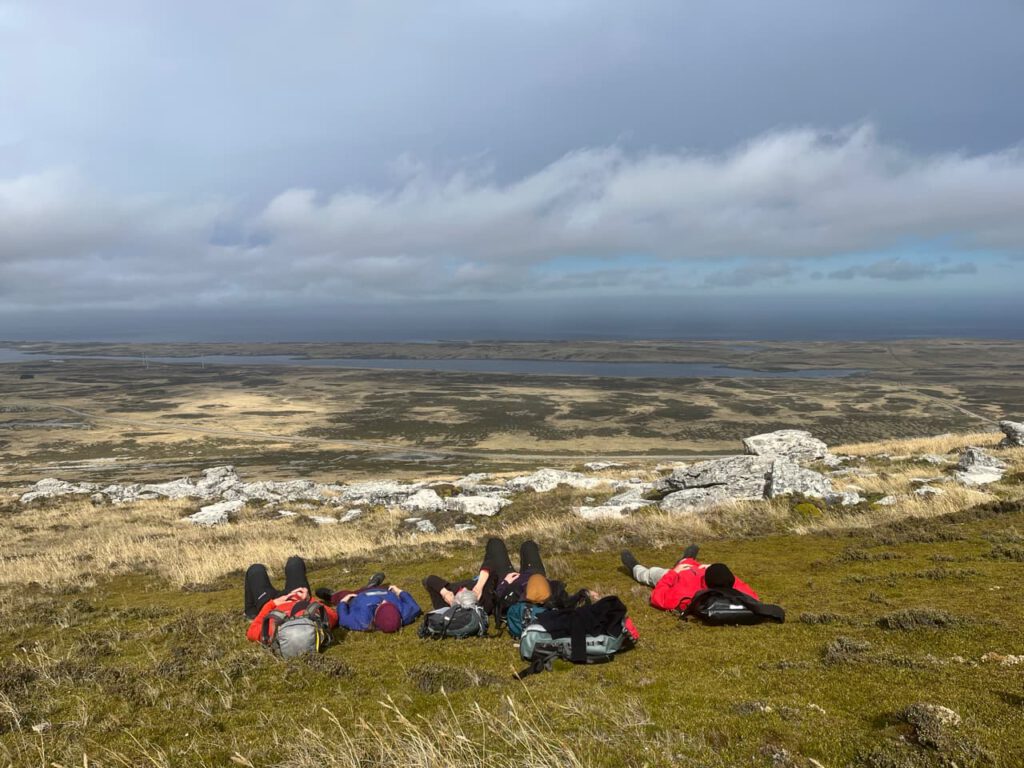
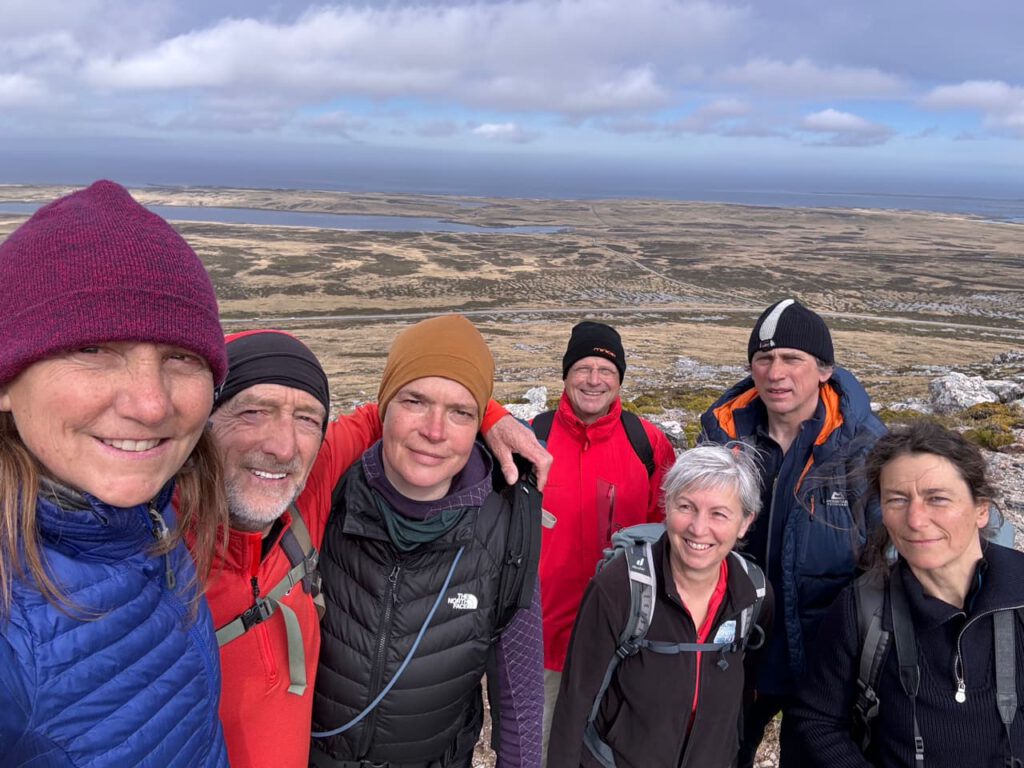
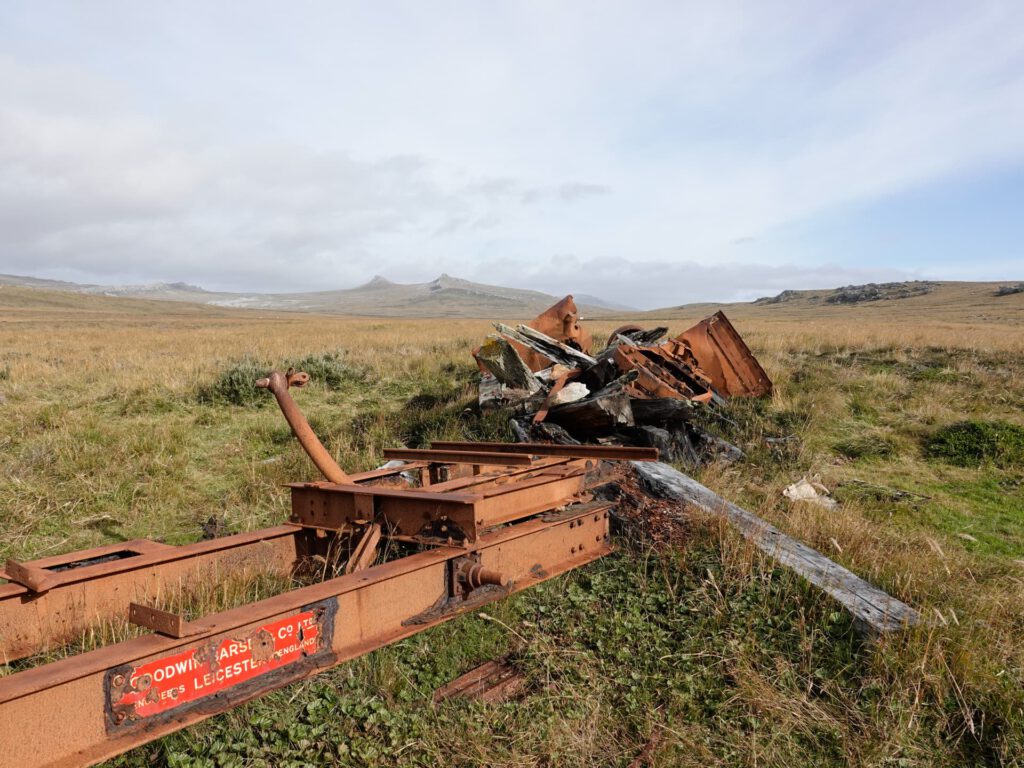
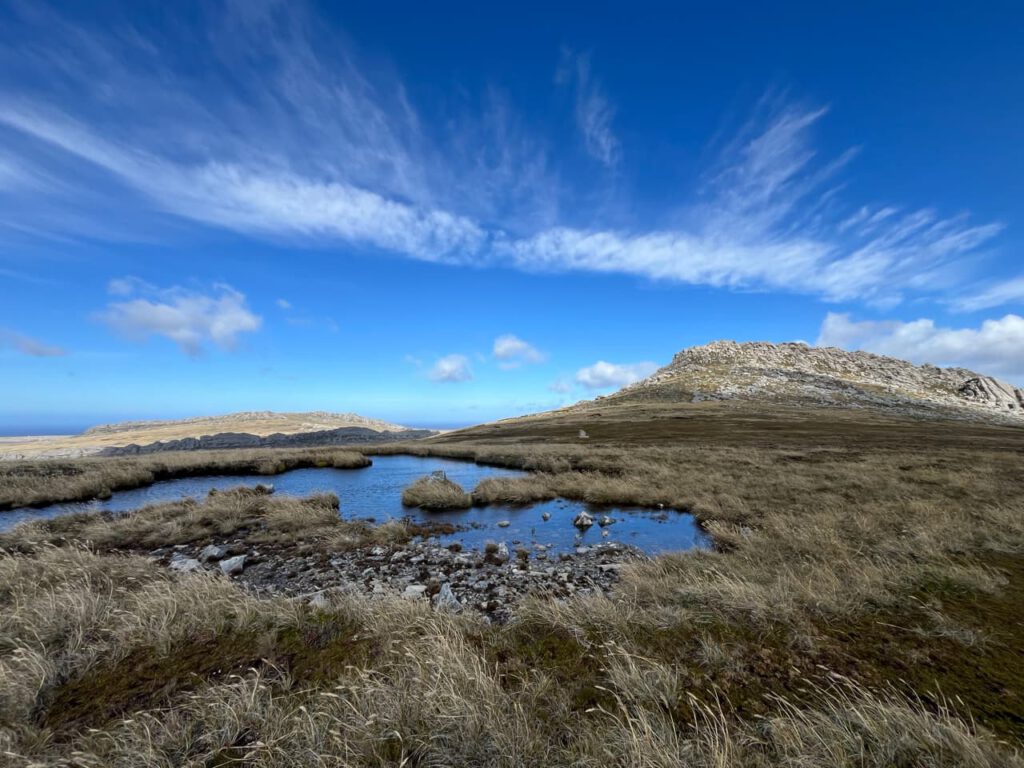
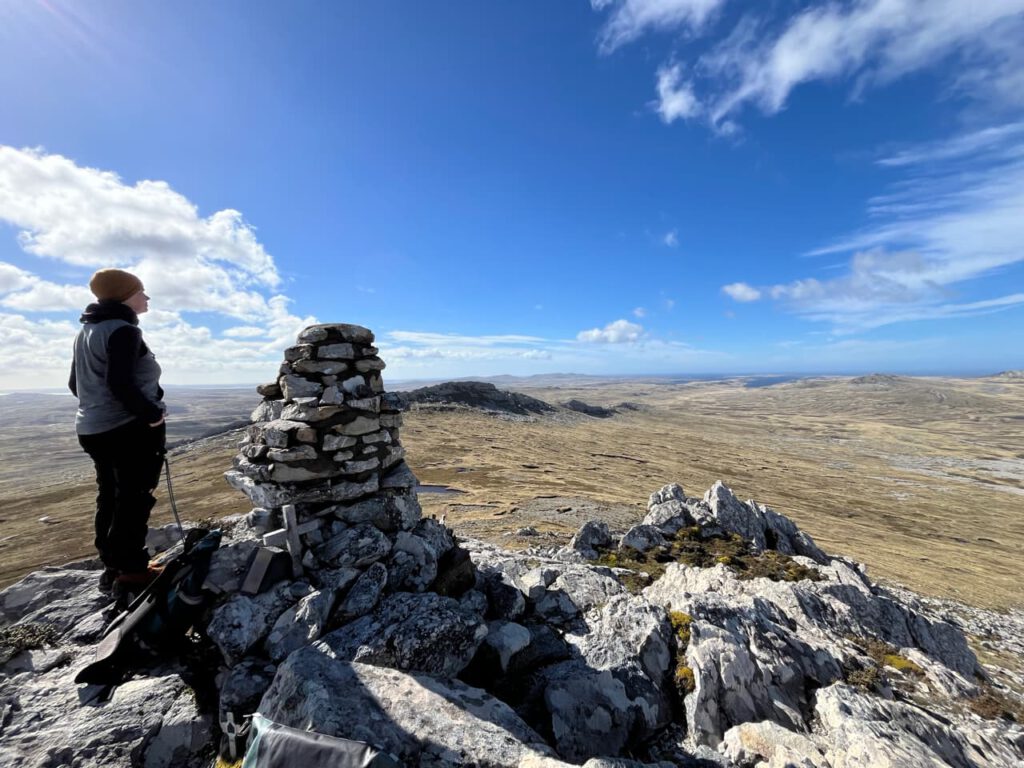
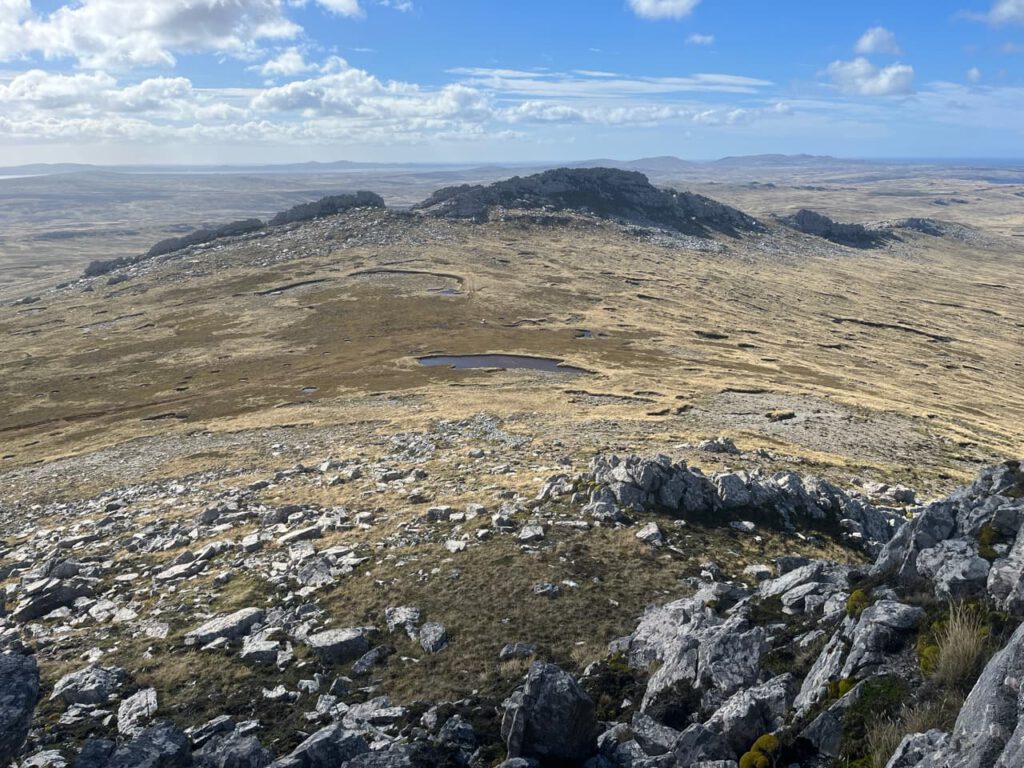
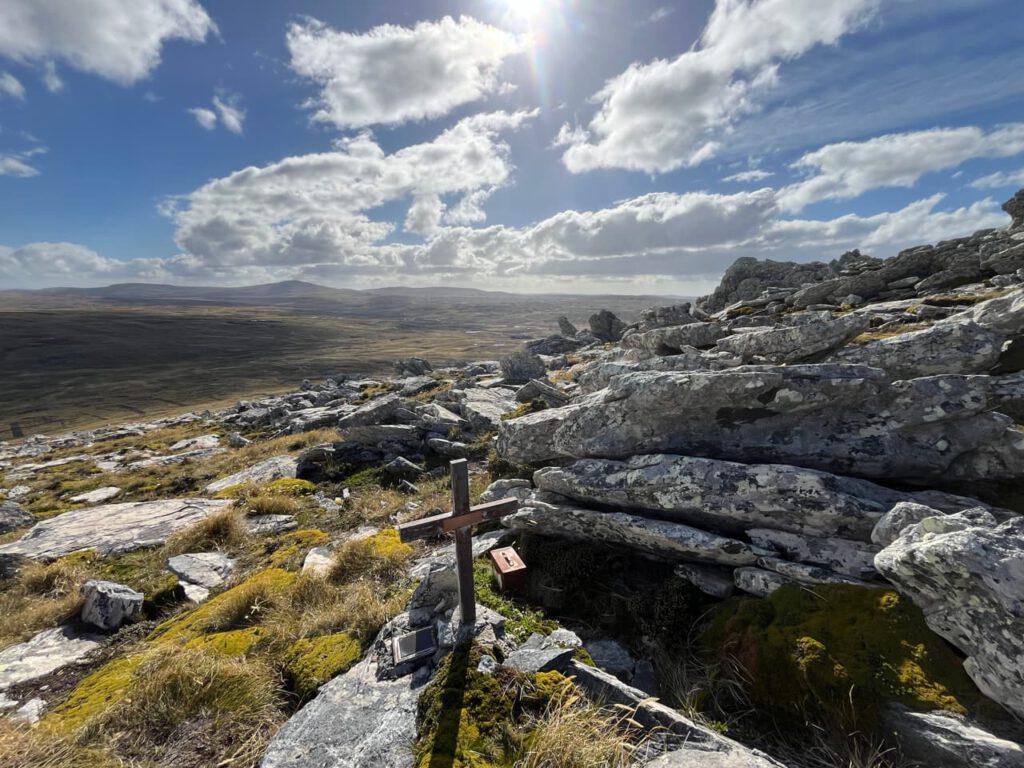
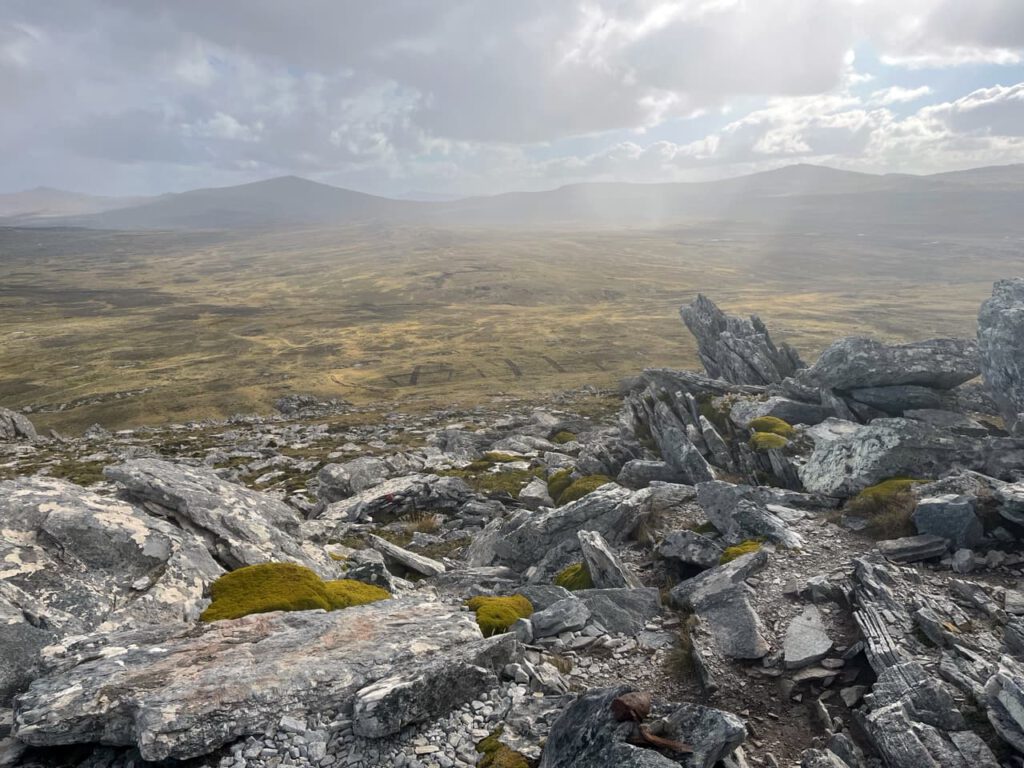
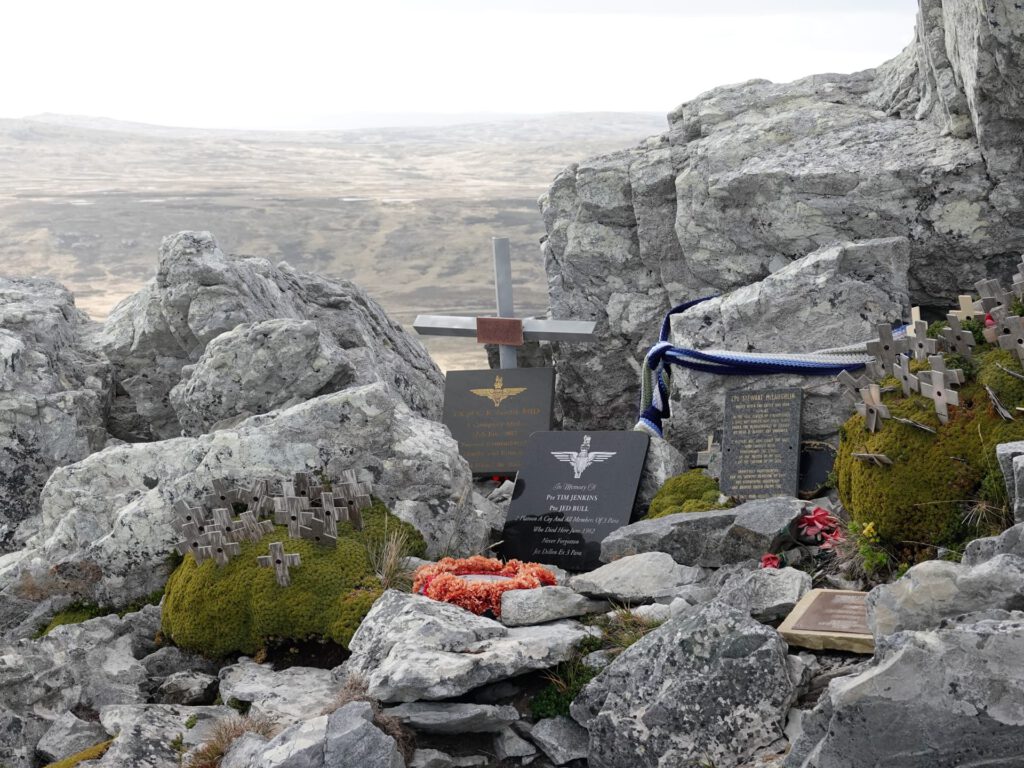
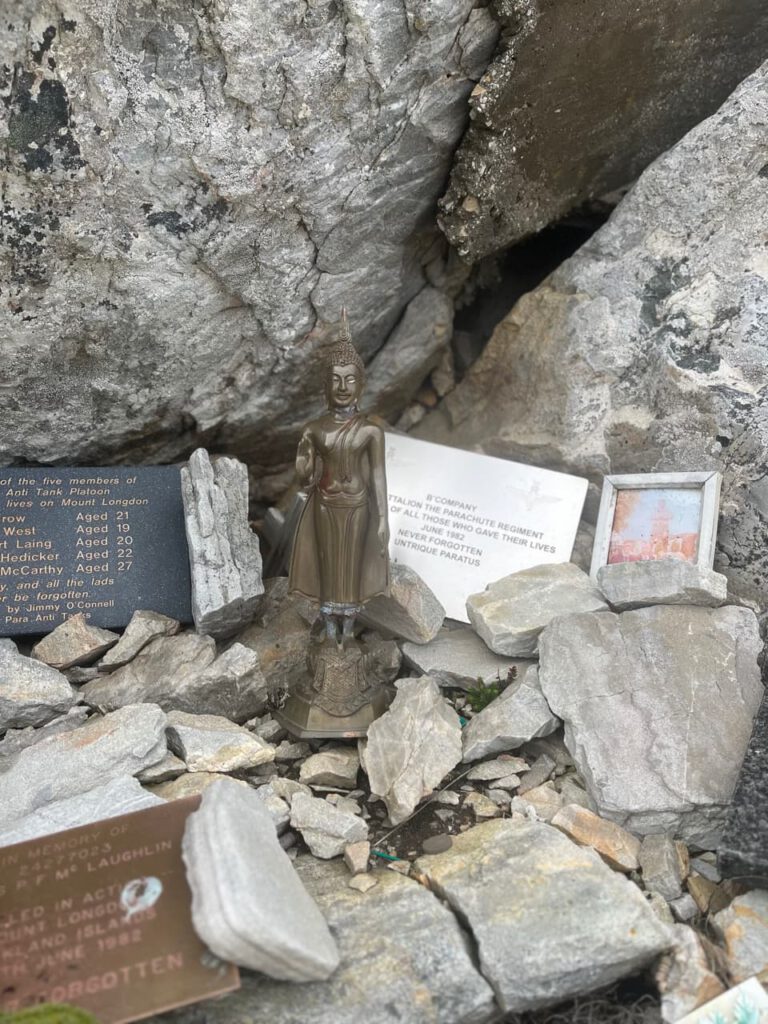
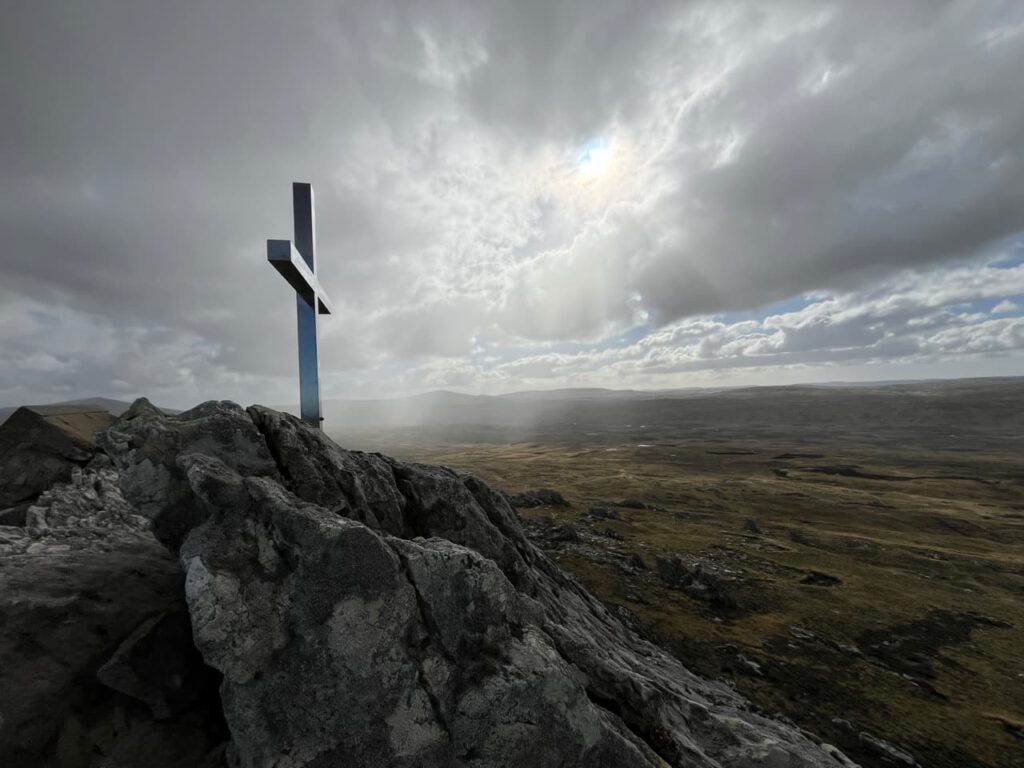
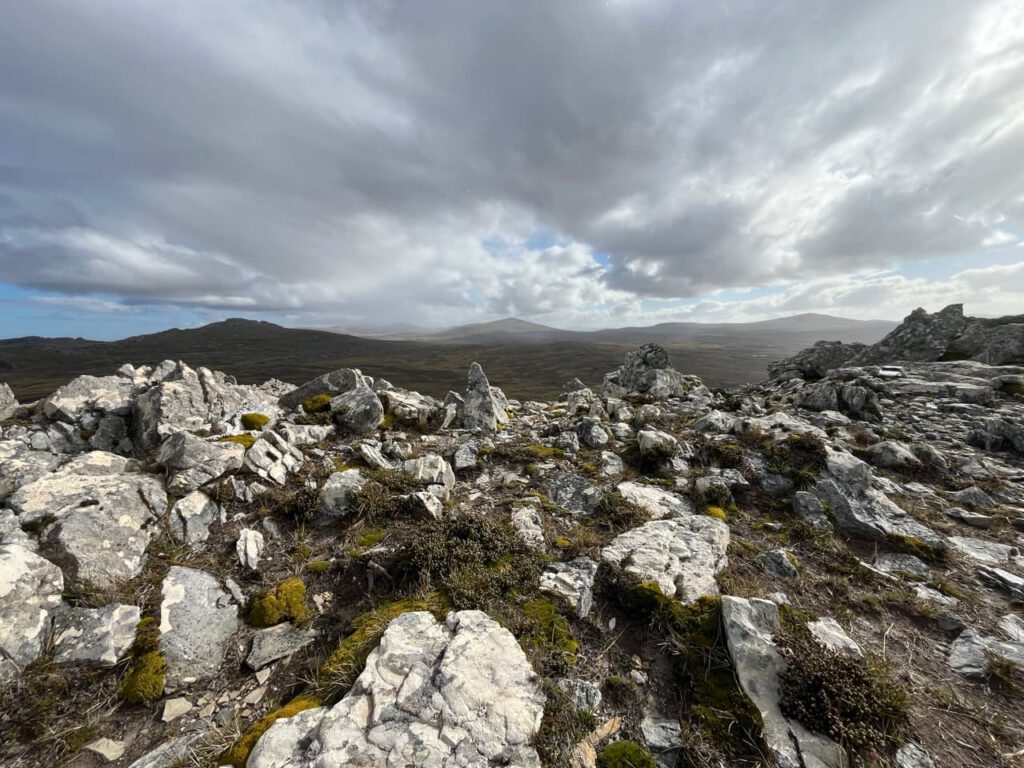
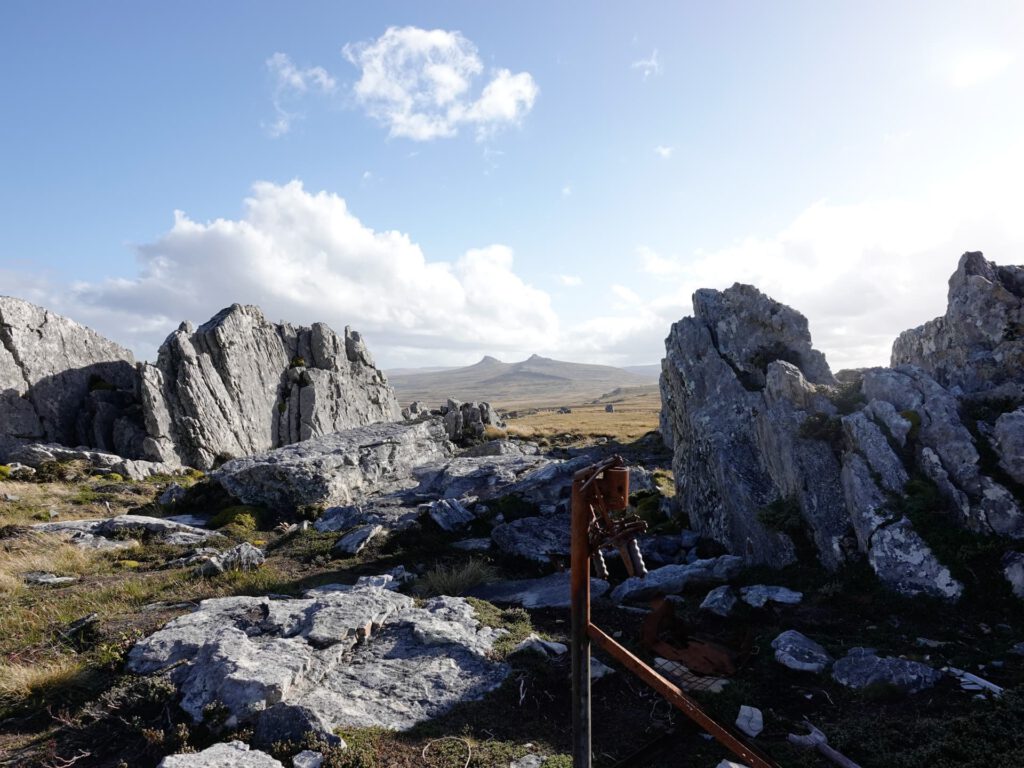
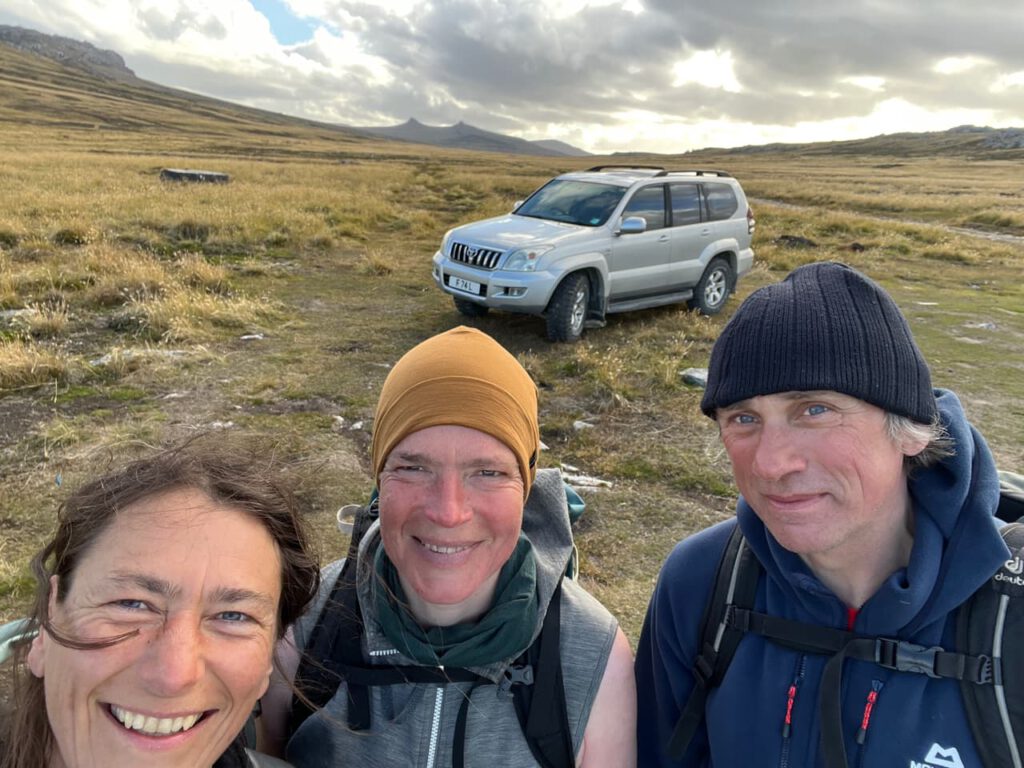
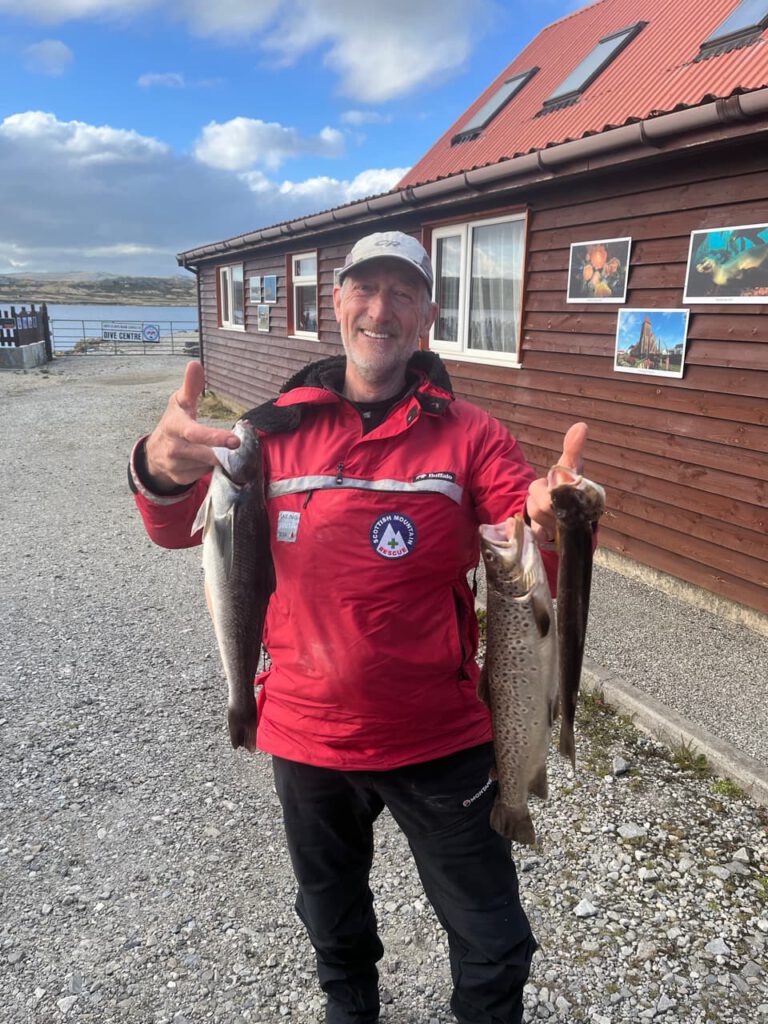
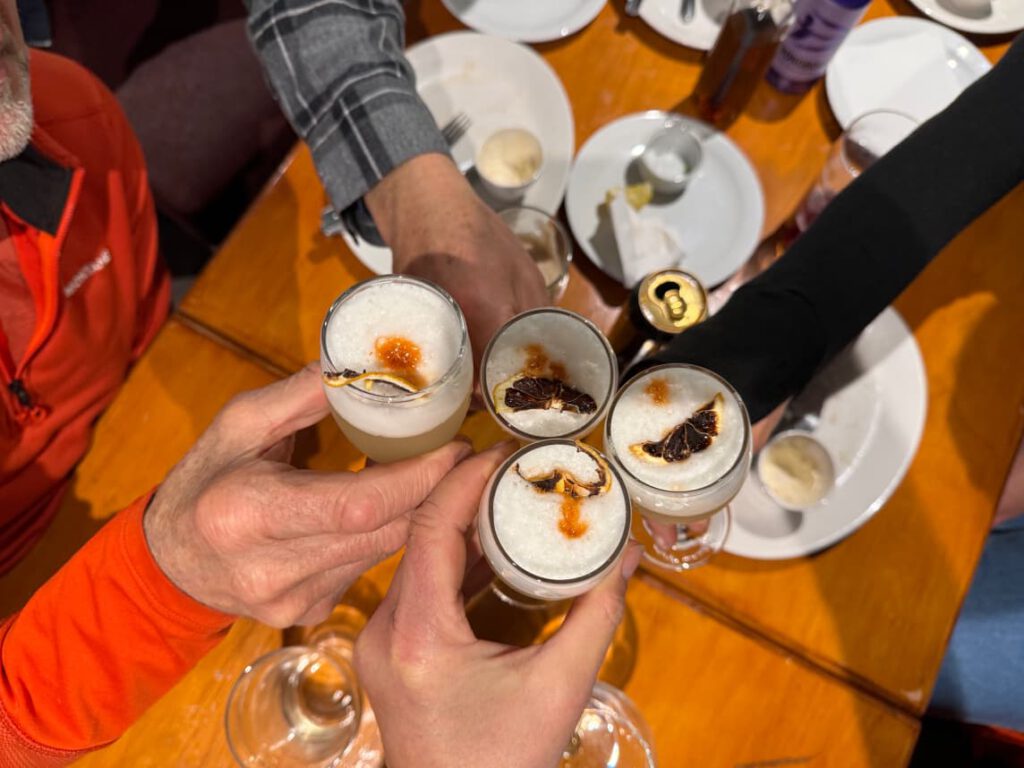
There is no better way to end the evening than with freshly caught fish with home-fried kelp chips, collected tea berries and a glass of Falklands gin or a round of pisco sour. But as beautiful as it is here, it’s time to say goodbye.
